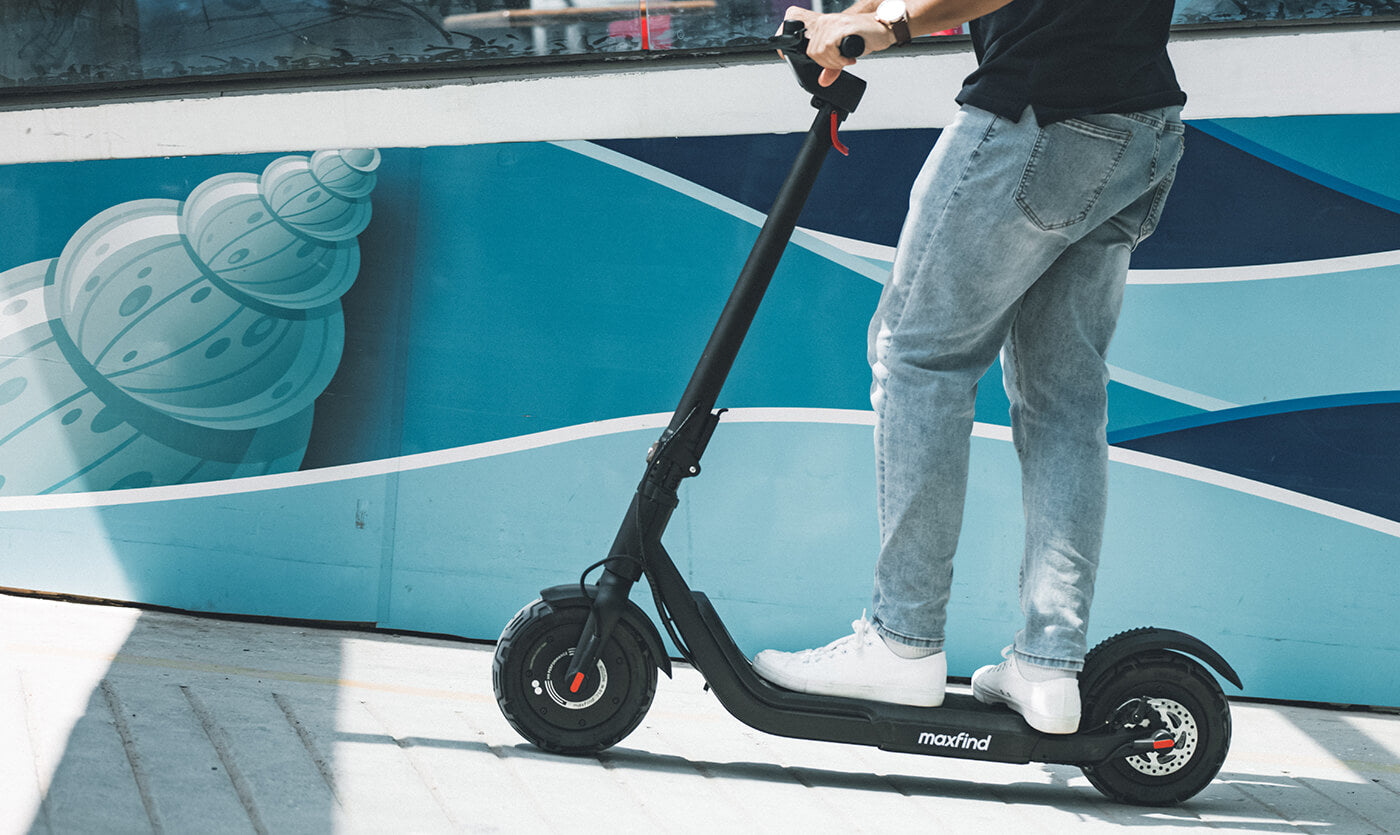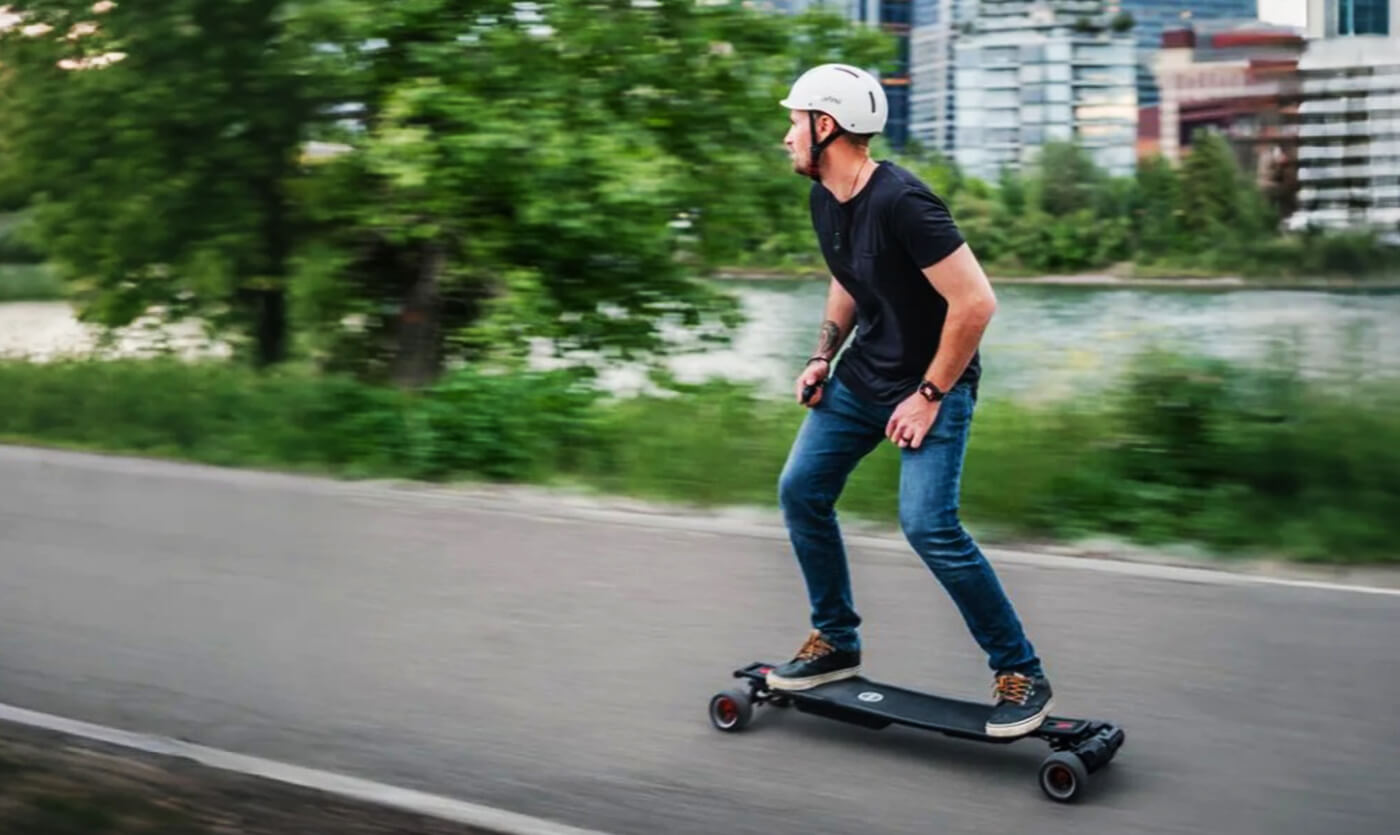Die meisten Consumer-E-Scooter erreichen realistisch Höchstgeschwindigkeiten von 18-25 mph und bieten 15-35 Meilen pro Ladung, wenn Fahrergewicht, Hügel und Wetter berücksichtigt werden. Dieser Leitfaden erklärt die Lücke zwischen Laborwerten und Straßenrealität, zeigt Möglichkeiten zur Reichweitensteigerung, ordnet Modelle den Bedürfnissen zu und behandelt Sicherheits- und Rechtsgrundlagen.

Warum Geschwindigkeit & Reichweite für Alltagsfahrer wichtig sind
Pendelszenarien, bei denen jeder Kilometer zählt
Stellen Sie sich das letzte Stück eines morgendlichen Arbeitswegs vor: Der Bus setzt Sie acht Blocks vom Büro entfernt ab, und der Verkehr steht bereits im Stau. Ein Scooter, der maximal 18 mph erreicht und 15 Meilen mit einer Ladung fährt, bedeutet, dass Sie pünktlich ankommen – ohne Stress, ohne Parkgebühren.
Erweitern Sie das auf eine Reichweite von 25 Meilen, und Sie haben die Heimfahrt plus einen schnellen Einkauf abgedeckt. Wenn Geschwindigkeit und Ausdauer mit Ihrer täglichen Fahrstrecke übereinstimmen, wird der Scooter zu einem echten Autoersatz statt zu einem Spielzeug.
Sicherheits- und rechtliche Auswirkungen höherer Geschwindigkeiten
In den meisten US-Städten stoßen persönliche Scooter, die 20 mph überschreiten, auf graue Regulierungszonen: Einige Bundesstaaten behandeln sie wie Mopeds (Registrierung, Versicherung, Spiegel), während andere die Geschwindigkeit einfach auf 15 mph begrenzen. Schneller als die vorgeschriebenen Limits zu fahren, kann Bußgelder oder den Verlust von Versicherungsansprüchen nach einem Unfall zur Folge haben.
Die Kenntnis der realistischen Höchstgeschwindigkeit informiert auch darüber, welche Helmbescheinigung Sie benötigen (CPSC für 20 mph, DOT für 30 mph+) und ob Sie auf Radwege statt Gehwege angewiesen sind.

Kernfaktoren, die Höchstgeschwindigkeit und Reichweite bestimmen
Grundlagen zu Motor und Controller
Die Dauerleistung eines Motors Dauerleistung in Watt—nicht die auffällige „Spitzenleistung“—setzt die Obergrenze für die Dauerleistung. Kombiniert man das mit einem intelligenten Controller (dem elektronischen Gehirn, das die Spannung steuert), erhält man sanftere Beschleunigung, weniger Wärmeentwicklung und längere Lebensdauer der Komponenten.
Doppelmotor-Setups liefern mehr Drehmoment für Hügel, ziehen aber schneller Strom, was die Reichweite verringert, wenn sie ständig auf Volllast laufen.
Batteriekapazität, Chemie und Zustand
Kapazität, gemessen in Wattstunden (Wh), ist dein Tank: größere Zahlen bedeuten mehr gespeicherte Energie. Akkupacks reichen von 270 Wh in ultraleichten Modellen bis 1500 Wh in Hochleistungs-Boliden.
Nickel-Mangan-Kobalt (NMC)-Zellen liefern kräftige Beschleunigung, verschleißen aber schneller, wenn man immer auf 100 % lädt. Lithium-Eisen-Phosphat (LiFePO₄) hält mehr Zyklen, wiegt aber mehr und reduziert dadurch etwas die Höchstgeschwindigkeit.
Fahrergewicht, Gelände und Wettervariablen
Ein 86-kg-Fahrer, der auf einem kühlen Frühlingstag Stop-and-Go-Runden auf dem Campus fährt, wird ganz andere Werte sehen als ein 54-kg-Fahrer, der entspannt an Floridas Promenaden entlangfährt. Hügel und Gegenwind erhöhen den Stromverbrauch; Kälte verdickt den Batterieelektrolyten; Sommerhitze zwingt die Steuergeräte zum Drosseln.
Alle drei Faktoren können die reale Reichweite um 20–30 %.

Beworbene Spezifikationen vs. reale Leistung
Wie Hersteller Labortests durchführen
Die meisten Marken testen auf ebenen Indoor-Strecken mit einer 75-kg-Puppe, konstanter 24 km/h Fahrt, neuen Reifen und einer frischen 100 % Batterie. Die daraus resultierende Reichweite beträgt Bestfall statt typisch.
Geschwindigkeitstests listen oft den höchsten Momentanwert bei Vollgas, nicht die Geschwindigkeit, die der Scooter über mehrere Meilen halten kann.
Warum Ihre Ergebnisse oft abweichen
Fügen Sie städtische Schlaglöcher, rote Ampeln und einen Rucksack mit Einkäufen hinzu: Die makellose Angabe von 40 Meilen könnte näher an 22 tatsächlichen Meilen liegen. Lithium-Ionen-Akkus verlieren außerdem etwa 1 % Kapazität alle 30–40 vollständigen Ladezyklen. Sechs Monate später wird die Beschleunigung schwächer und die Reichweite kleiner.
Eine einfache Formel zur Schätzung Ihrer tatsächlichen Reichweite
Geschätzte Reichweite (Meilen) = Angegebene Reichweite × 0,7 × (75 kg / Ihr Gewicht) × Geländefaktor
Geländefaktor: 1,0 auf ebenem Boden, 0,85 für hügelige Vororte, 0,7 für steile Hügel. Es ist nicht perfekt, aber es bringt Sie auf ein paar Meilen genau – gut genug, um die Heimfahrt ohne Reichweitenangst zu planen.

Praktische Tipps zur Leistungsmaximierung
Tägliche Batteriepflege und intelligentes Ladeverhalten
-
Bleiben Sie zwischen 20% – 90%; Li-Ionen-Zellen mögen keine Extreme.
-
Verwenden Sie die Original-Ladestation in den ersten vier Monaten; Schnellladegeräte können ein Ungleichgewicht verursachen.
-
Lassen Sie den Akku abkühlen 30 min nach der Fahrt vor dem Einstecken – heißes Laden altert die Zellen schnell.
Reifendruck, Bremskontrollen und Firmware-Updates
Niedriger Druck erhöht den Rollwiderstand; überprüfen Sie den PSI-Wert wöchentlich und pumpen Sie auf den oberen Bereich der empfohlenen Werte auf. Eine schleifende Scheibenbremse kann 2 mph von der Höchstgeschwindigkeit abziehen – hören Sie auf Quietschen.
Hersteller veröffentlichen oft Firmware, die das Gas glättet oder die Rekuperationsbremse verstärkt; ein schnelles Update lohnt sich.
Energiesparende Fahrtechniken für längere Fahrten
Fahren Sie sanft mit dem Gas, statt ruckartige Starts, und rollen Sie wann immer möglich aus. Verwenden Sie Eco-Modus auf ebenen Strecken und Sport-Modus nur für Hügel. Kleine Gewohnheiten können die Reichweite um 10–15% verlängern, ohne die Fahrzeit zu erhöhen.

Die richtige Wahl des Scooters für Ihren Anwendungsfall
Leichte urbane Modelle für kurze Strecken
-
Geschwindigkeits-/Reichweitenziel: ~15 mph, 10–15 Meilen
-
Warum wählen: Leicht zu tragen, faltbar für den Transport, kostet 300–600 $
-
Achten Sie auf: Kleine Räder mögen keinen rauen Asphalt; moderate Beschleunigung
Mittelklasse-Pendler, die Geschwindigkeit und Reichweite ausbalancieren
-
Geschwindigkeits-/Reichweitenziel: 18–25 mph, 20–35 Meilen
-
Warum wählen: Täglicher Pendelverkehr Sweet Spot; Energie für Erledigungen
-
Achten Sie auf: Über 40 lb Gewicht – robust, aber ohne Aufzug schwer
Hochleistungs- oder Offroad-Optionen und Kompromisse
-
Geschwindigkeits-/Reichweitenziel: 30–50 mph, 30–60 Meilen
-
Warum wählen: Duale Motoren bezwingen Hügel, Federung meistert Trails
- Achten Sie auf: 70 lb Rahmen, DOT-Helme, mögliche Zulassungspapiere

Lernen Sie den Maxfind Glider G5 Pro kennen – Ihren Scooter für den nächsten Level Pendelverkehr
Wenn Sie sich für einen Elektroroller ist die klügste Art, dem Verkehr zu entkommen, der Maxfind Glider G5 Pro verdient eine genaue Betrachtung. Hier ist, warum er herausragt:
-
Leistung in der Praxis, die dem Hype gerecht wird
Doppelmotoren treiben den G5 Pro auf 25 mph und liefert dabei dennoch eine praktische 32–36 Meilen Reichweite mit einer einzigen Ladung, dank des leistungsstarken Samsung 21700-Akkupacks. -
Schnelle, flexible Leistung
Der Akku lädt in etwa 3 Stunden, und ein Schnellwechsel-Design ermöglicht es, einen Ersatzakku für ganztägiges Fahren mitzunehmen. -
Für echte Straßen gebaut
Breite Luftreifen schlucken Schlaglöcher und lose Untergründe, während ein steifes, aber faltbares Gestell bis zu 265 lbs ohne Nachgeben. -
Bergbezwingendes Drehmoment & sicheres Bremsen
Der Dual-Antrieb bewältigt mühelos Steigungen; die Dreifachbremswirkung (Rekuperation, elektronisch und mechanisch) sorgt für Kontrolle beim Abfahren. -
Pendlerfreundliche Details
Ein intuitiver Daumenhebel-Gasgriff, ein helles Display, integrierte Lichter und wetterfeste IP-Zertifizierung runden ein Paket ab, das sich klein zusammenklappen lässt für Busse oder die Aufbewahrung im Büro.
Fazit: Wenn Sie einen Elektroroller brauchen, der mit dem geschäftigen Stadtleben Schritt hält – schnell, mit großer Reichweite, schnell aufladbar und robust genug für den täglichen Gebrauch – erfüllt der Maxfind Glider G5 Pro alle Anforderungen. Machen Sie eine Probefahrt und verwandeln Sie Ihren täglichen Arbeitsweg in den besten Teil des Tages.
Sicher, legal und versichert bleiben
Wesentliche Schutzausrüstung und Helmkategorien
Bei 15 mph, ein zertifizierter Fahrradhelm (CPSC) ist Minimum. Früher 25 mph, Sie befinden sich im Motorradbereich (DOT, ECE). Fügen Sie Handgelenkschützer sowie CE-zertifizierte Knie-/Ellenbogenschützer hinzu – Stürze bei hoher Geschwindigkeit ähneln Motorradunfällen mit niedrigem Seitenaufprall.
Lokale Geschwindigkeitsbegrenzungen, Gehwegregeln und Führerscheinpflicht
-
Kalifornien & Texas: 20 mph Begrenzung, nur Radwege, kein Führerschein
-
New York City: 15 mph Begrenzung, Gehwegfahren verboten, Bußgelder bis zu 500 $
-
Bundesstaat Washington: 30 mph erlaubt mit Führerschein, Spiegeln, Beleuchtung
Überprüfen Sie stets die städtischen DOT-Seiten – Regeln ändern sich schneller als Produktkataloge.
Garantie, Versicherung und Batteriewechselkosten
Werksgarantien gelten 12 Monate oder 600 Meilen. Neue Batteriepacks kosten 200–700 $. Einige Hausbesitzer- oder Mieterversicherungen decken den Scooter als persönliches Eigentum ab, aber die Haftpflicht benötigt oft eine Micromobility-Erweiterung. Rufen Sie Ihren Versicherer an, bevor Sie fahren.






Teilen:
Was sind die Dos und Don'ts bei einem elektrischen Skateboard?
Wie funktioniert ein elektrisches Skateboard?